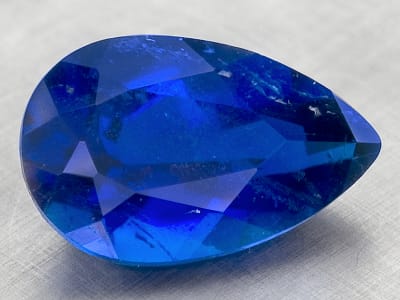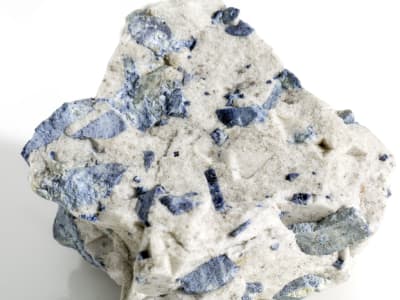This mineral species can be opaque to crystalline transparent. The color of lazulite ranges from medium to dark greenish blue to violet blue and is often mottled with white. When fashioned into gems, finished stones typically weigh less than 5 carats. A separate mineral species, lazulite should not be confused with lazurite or azurite.
General Information
LWUV: inert
Lazulite Colors
-
 Black
Black -
 Blue
Blue -
 Brown
Brown -
 Green
Green -
 Yellow
Yellow
Alternate Names
Bluespar
Countries of Origin
Myanmar; Afghanistan; Russian Federation; Czechia; United States of America; Madagascar; United Kingdom of Great Britain and Northern Ireland; Portugal; Austria; Sweden; Pakistan; Morocco; Unknown; China; Ireland; Brazil; Slovakia; Bulgaria; Chile; France; Argentina; Hungary; Japan; Rwanda; Switzerland; Bolivia (Plurinational State of); India; Spain; Canada; Norway; Namibia; Finland; Italy; Zimbabwe; Antarctica; Australia; Peru; Germany
History
Gets its name from the German word "lazurstein" which means blue stone.
Care
Lazulite is brittle so please handle with care. It is slowly soluble in acid in hot acid.

